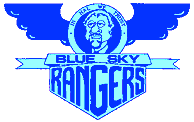B-17 Bomber
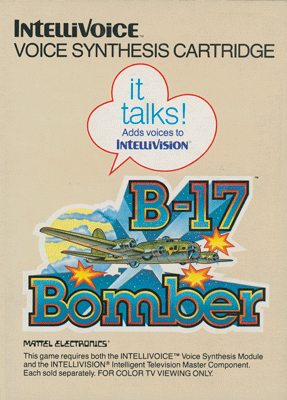
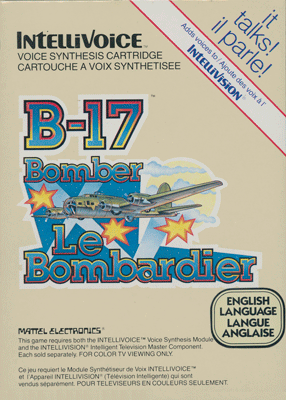
INTELLIVISION CARTRIDGE [Mattel Electronics #3884]
Working titles: Air Traffic Controller, Flying Fortress
Design: John Sohl & Bob Del Principe, Bill Fisher & Stephen Roney
Program: John Sohl, Bill Fisher & Stephen Roney
Graphics: Kai Tran, Peggi Decarli (map of Europe)
Sound: Bill Fisher
Voice of Pilot: Phil Proctor
Voice of Bombadier: Phil Austin
See also Intellivoice credits
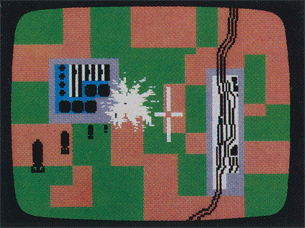
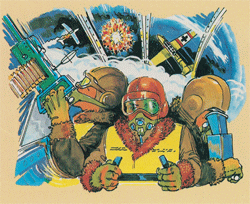
DEVELOPMENT HISTORY
Despite published reports that this game came out of a brainstorming picnic in the park (TV Guide, June 19 1982), John Sohl remembers it differently: The initial Intellivoice brainstorming session was held mid-1981 on the third floor of the main Mattel Toys building -- a floor with armed guards to keep spies from finding out Mattel's biggest secrets, such as what Barbie would be wearing next year. This session yielded three ideas that went into production: Space Spartans, Bomb Squad and Air Traffic Controller. John, fresh from Astrosmash, began work on Air Traffic Controller, although he wasn't enthusiastic about the concept: bringing a plane in for a landing based on feedback from the control tower. He was leaning toward using the alternate scenario developed for the game -- an oil tanker negotiating a foggy docking with feedback from the Harbor Master -- when Bob Del Principe, a graphics artist, came into his cubicle and suggested making the airplane a bomber on a mission over Europe. Now blowing stuff up was a concept John could get enthusiastic about! Within an hour, Air Traffic Controller turned into Flying Fortress.
By early 1982, John, with graphics artist Kai Tran, had developed an impressive bombing run simulation with revolutionary Intellivision effects, but the cartridge was oversized and the gameplay was still to be defined. Steve Roney and Bill Fisher, just off Space Spartans, were assigned to the game, now called B-17 Bomber, full-time. John, Steve and Bill worked up to the last minute -- literally -- to finish it. Unfortunately, most of John's fancy features (such as a turret gunner who could rotate 360 degrees) had to be cut in favor of gameplay. On April 23, 1982, two months overdue, on the day the program absolutely had to be shipped to the ROM factory in Arizona, programming frantically continued. (John recalls: "During the final week, and particularly the final day, I got the impression that everyone [in the department] was adding code or graphics to the game.") With less than an hour to go, they pronounced it finished (or, more accurately, "close enough"). An unsuspecting visitor to Mattel that day was Shanghaied, stuck in a cubicle and asked to try out the game. That 30 minutes of play was the extent of the game testing. The code was shipped, and everyone kept their fingers crossed that the bugs wouldn't be too bad. Luckily, they weren't, and B-17 Bomber was released to strong reviews.









OVERLAYS
